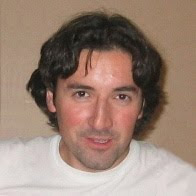Cerro Rico, "the rich hill", supported the Spanish Empire for three centuries. According to a popular saying, so much silver had been extracted from this hill that the Spanish could have constructed a bridge to Spain made entirely of silver, and still have some left to carry across it.
The sad fact is that they could have done the same with the bones of the people that worked in the mines there - it is estimated that as many as eight million (!!) indigenous Bolivians and Africans died from working in the mines during the colonial rule.
Potosi, the world’s highest city, sits at its base at 4090m (13,420ft) altitude. Its population reached almost 200,000 in the silver boom times of the 17th century, when it was larger than London or Paris. The mines' output began to decline in the early 19th century and silver made way for tin and zinc, but the hill is still mined for silver to this day. Most of the operations today are run by miner-owned cooperatives, which work under the conditions that changed little from the colonial period; life expectancy for a miner in Potosi is a little less than 40 years, and some are as young as 12 (there is a recent documentary about Cerro Rico mines - http://www.thedevilsminer.com).
The sad fact is that they could have done the same with the bones of the people that worked in the mines there - it is estimated that as many as eight million (!!) indigenous Bolivians and Africans died from working in the mines during the colonial rule.
Potosi, the world’s highest city, sits at its base at 4090m (13,420ft) altitude. Its population reached almost 200,000 in the silver boom times of the 17th century, when it was larger than London or Paris. The mines' output began to decline in the early 19th century and silver made way for tin and zinc, but the hill is still mined for silver to this day. Most of the operations today are run by miner-owned cooperatives, which work under the conditions that changed little from the colonial period; life expectancy for a miner in Potosi is a little less than 40 years, and some are as young as 12 (there is a recent documentary about Cerro Rico mines - http://www.thedevilsminer.com).





No comments:
Post a Comment